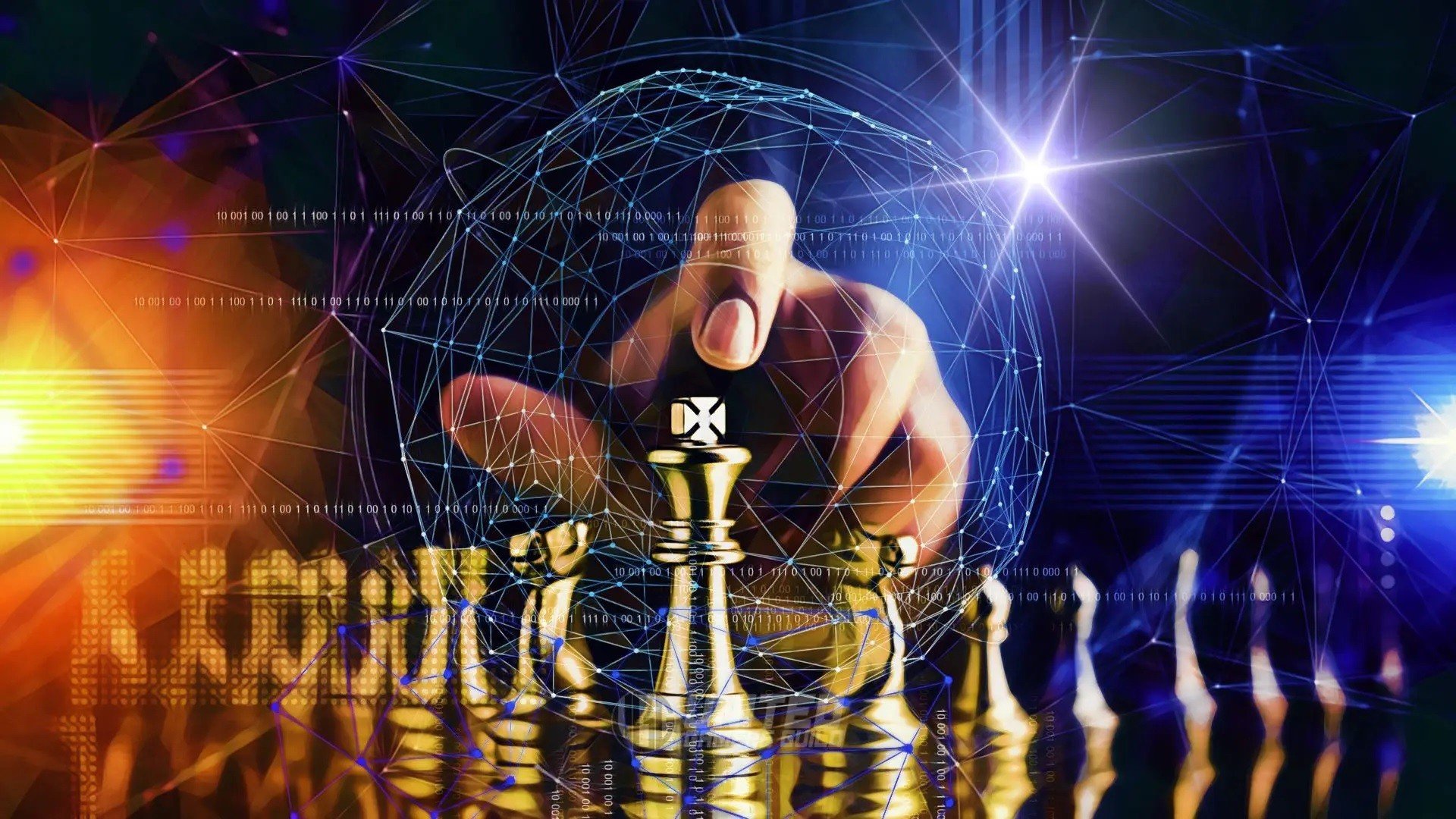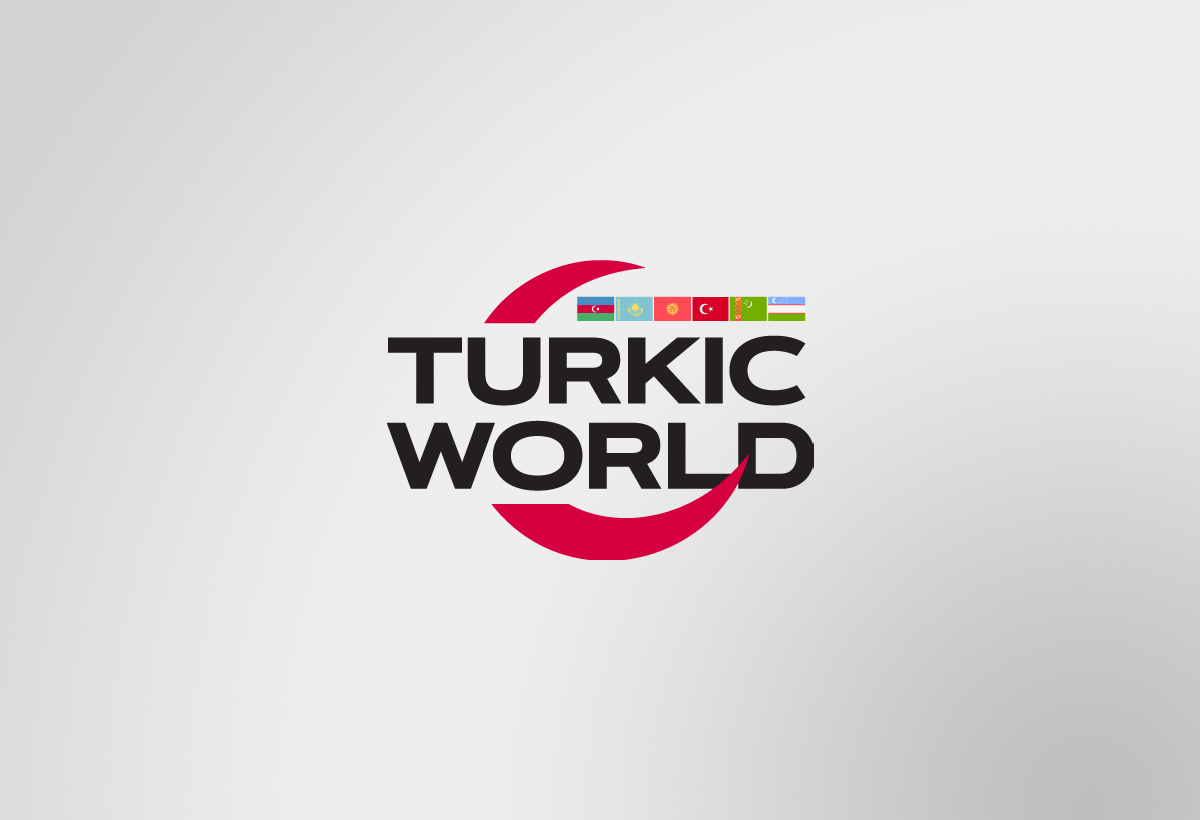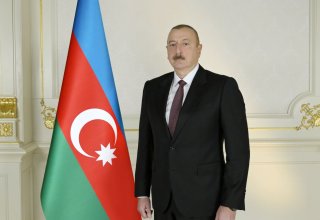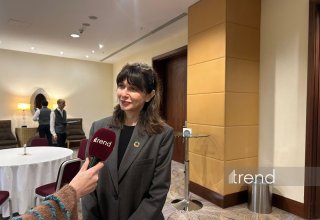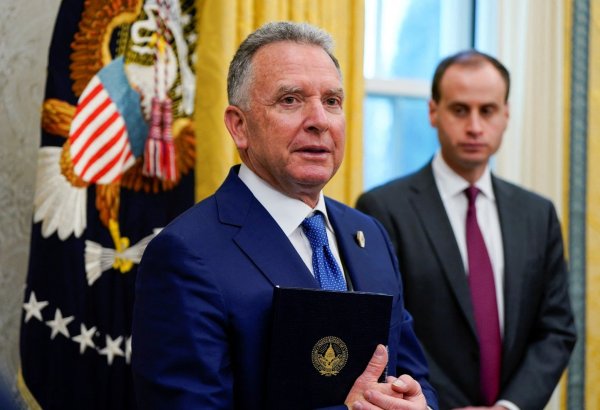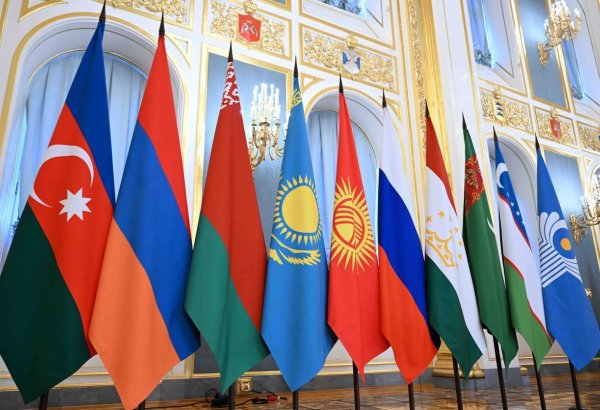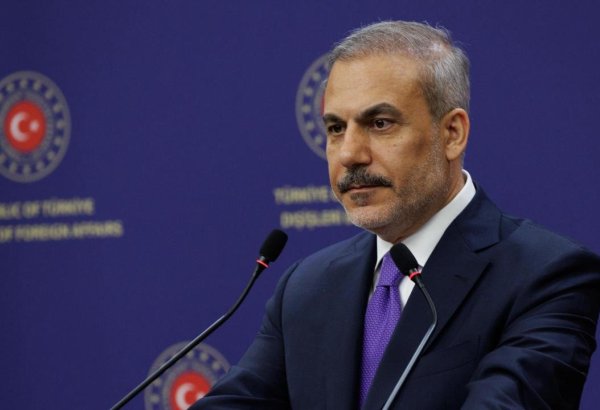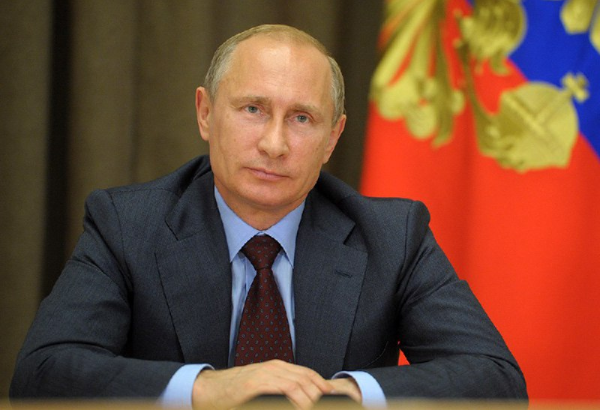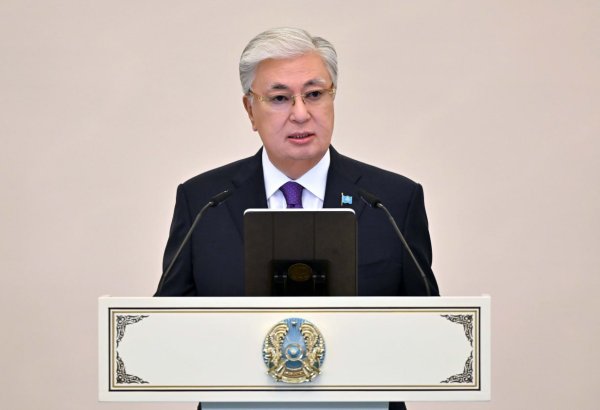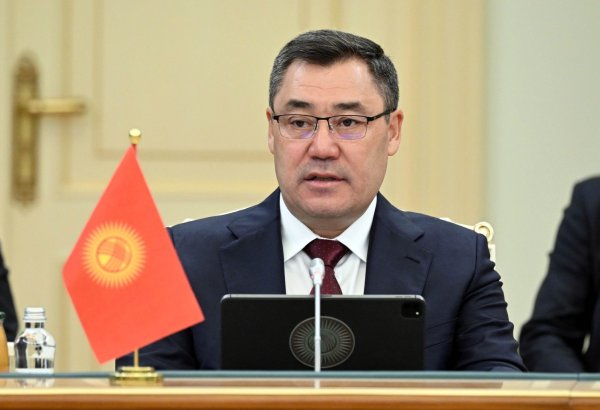BAKU, Azerbaijan, October 29. The global economic and strategic landscape is on the cusp of profound change, TurkicWorld reports referred to BakuNetwork.
The rise of a multipolar world is now beyond debate, and the U.S. stands at a crossroads. It must choose between the isolationist policies embodied by Donald Trump and the internationalist vision championed by Kamala Harris. G7 vs. BRICS: A Showdown in the Making
The global economic and strategic landscape is on the cusp of profound change. The rise of a multipolar world is now beyond debate, and the U.S. stands at a crossroads. It must choose between the isolationist policies embodied by Donald Trump and the internationalist vision championed by Kamala Harris. History shows us that national interests can shift overnight, turning allies into adversaries and vice versa. Take Richard Nixon’s 1972 visit to China as an example—here was a staunch anti-communist opening diplomatic doors with Beijing. Today, geopolitics is once again poised to deliver some unexpected twists.
G7 vs. BRICS: A Showdown in the Making
In the aftermath of Russia’s invasion of Ukraine in 2022, the G7—comprised of the U.S., the UK, France, Germany, Japan, Italy, and Canada—came together in a coordinated effort to pressure Moscow. From capping Russian oil prices and slapping on sanctions to freezing assets and funneling billions in aid to Ukraine, the G7 countries pulled out all the stops. They’ve also taken China to task for what they call non-market economic practices that undermine Western interests.
But if the G7 believes the whole world is going to fall in line with their efforts, they might want to think again. The BRICS bloc (Brazil, Russia, India, China, and South Africa) is gaining steam. Originally formed in the early 2000s as a loose coalition of emerging economies, BRICS has evolved into a serious power player. With the addition of countries like Iran, the UAE, Ethiopia, and Egypt, the bloc is expanding, and heavyweights like Saudi Arabia and Nigeria are next in line.
Yes, there are internal rifts—like the long-simmering border tensions between India and China—but BRICS members are pushing forward with economic cooperation. India, for instance, continues to see significant benefits from Chinese investment despite the political friction. Should Kamala Harris win the White House, she’ll likely deepen ties with India in an effort to keep China in check. If Trump reclaims the presidency, we can expect a return to his brand of pragmatic, business-first foreign policy, one that dovetails with the multipolar world that BRICS seeks to advance.
In the financial sphere, BRICS has been making moves. The bloc’s members have pooled $100 billion in reserves to support each other in times of crisis. They’re also working on an international payment system and a grain exchange, both of which could further elevate their status on the world stage.
Japan and South Korea: Navigating Between China and the U.S.
Even amid America’s domestic political turmoil, one thing remains constant: both Republicans and Democrats see China as a threat. U.S. protectionism is putting the squeeze on Japanese and South Korean companies, forcing them to comply with strict export controls on semiconductors destined for China. Japan still remembers the 1980s, when Washington pressured its chip industry into limiting exports, a move that hit hard.
In response to Biden’s protectionist stance, major players like Samsung and Toyota have been upping their investments in the U.S. But Tokyo and Seoul aren’t putting all their eggs in one basket—they’re also hedging their bets by expanding economic ties with China. In May 2023, the leaders of Japan and South Korea met with China’s premier to discuss boosting trade and investment.
If Trump returns to the Oval Office, Japan and South Korea will find themselves in a tricky spot—torn between China, their biggest export market, and the U.S., a more unpredictable ally. While both countries will likely maintain strong relations with Washington, China’s economic health—should it recover—will weigh heavily on their strategic decisions.
Brazil and Argentina: Lula vs. Milei – A Political Clash in Latin America
Latin America is currently grappling with sharp political polarization. The return of Luiz Inácio Lula da Silva to Brazil’s presidency has reignited ideological conflicts, particularly with Argentina’s newly elected president, Javier Milei. Lula aims to recapture the economic prosperity of his previous terms, but faces significant hurdles, including sluggish economic growth and deepening political divides. However, a notable rebound in the second quarter of 2024 has somewhat eased the pressure on his administration.
On the flip side, Milei is pursuing a hardline economic agenda aimed at reining in Argentina’s runaway inflation, though his policies have led to a downturn in consumer spending and a spike in unemployment. Yet, Milei remains a beacon of hope for many Argentinians frustrated with years of inefficient governance. Should his policies bear fruit, Milei’s international reputation could soar. His rejection of frameworks like BRICS and MERCOSUR, however, marks a stark departure from Lula’s more multilateral and collaborative approach to global affairs.
BRICS and the Golden Opportunity
The World Gold Council’s latest report underscores the substantial influence BRICS countries (Brazil, Russia, India, China, and South Africa) exert on the global gold market. Together, these nations control over 20% of the world’s gold reserves, a testament to their increasing economic clout and growing leverage in the global economy.
Gold Reserve Distribution Among BRICS Nations:
Russia holds the top spot within BRICS, maintaining 2,340 tons of gold, accounting for 8.1% of the world’s total reserves.
China, though fifth on the list globally, contributes 2,260 tons to BRICS' collective gold reserves.
India ranks third in the BRICS bloc with 840 tons, cementing its position as a key player in regional economic stability.
Brazil and South Africa, while holding relatively smaller reserves, still contribute to BRICS' overall gold stockpile.
Notably, Russia and China together hold 74% of BRICS' gold reserves, a figure that highlights their dominant roles within the group.
Gold Reserves as a Barometer of Global Influence
Economic Power: The concentration of significant gold reserves in BRICS countries signifies their rising importance in the global economic order. Gold has long been a symbol of financial trust and stability, further enhancing BRICS countries’ status as pivotal players on the world stage.
Financial Stability: Gold, often seen as a “safe haven” asset, maintains its value even in times of economic turbulence. With sizable reserves, BRICS countries are better equipped to weather external shocks like inflation or financial market volatility, fortifying their economic resilience.
Geopolitical Influence: The expansion of BRICS' gold reserves opens the door to a gold-backed currency that could challenge the U.S. dollar's dominance. As global uncertainties rise, such a currency could shift the balance of power, realigning financial flows toward emerging economic alliances.
Investment Opportunities: As central banks ramp up gold purchases and economic uncertainty drives demand, BRICS countries are poised to capitalize. With gold prices on the rise, these nations could see the value of their reserves soar, enhancing their financial positions.
The Prospects for a BRICS Common Currency
The notion of a common BRICS currency is gaining traction, especially as the global trend toward de-dollarization intensifies. The push to reduce reliance on the U.S. dollar has fueled discussions about creating a gold-backed currency. Such a move could offer a viable alternative to the dollar in international markets, particularly in bilateral trade within the BRICS bloc.
A BRICS currency would represent a seismic shift in the global financial landscape. Backed by substantial gold reserves, it could provide a stable, inflation-resistant option for international trade. This initiative aligns with the bloc’s broader goals of creating a more multipolar world order—one less reliant on Western financial hegemony.
Impact on Gold Prices and BRICS' Role in the Global Economy
The increasing demand for gold, driven by BRICS central banks and global investors seeking safe-haven assets amidst rising global instability, could push gold prices even higher. This growing demand reinforces BRICS countries’ strategic position in global financial markets, enhancing their influence over the world economy. The economic transformation initiated by BRICS, anchored by significant gold reserves and a potential new currency system, could profoundly shift the balance of power in the global economy, directly challenging the dominance of the U.S. dollar. As financial flows begin to shift, the implications for international markets could be profound.
For investors, analysts, and policymakers, the developments within BRICS are critical. The introduction of a new BRICS currency, combined with the bloc's growing economic weight, has the potential to reshape global financial markets and destabilize the long-standing economic order. Monitoring BRICS' next steps will be essential to understanding the future of global economic stability.
The BRICS Bloc: From Acronym to Global Force
Over the past 25 years, BRICS has evolved from a term coined by investment banker Jim O’Neill in 2001 into a symbol of resistance to Western hegemony. Originally representing the promising economies of Brazil, Russia, India, and China, BRICS has since expanded its political and economic power, now known as BRICS+, which includes South Africa, Iran, Egypt, Ethiopia, and the United Arab Emirates. Their recent summit in Kazan marked a turning point, focusing on establishing a multipolar world order that directly counters U.S. and Western dominance.
A central theme of the Kazan summit was finding viable alternatives to the U.S. dollar, which still plays a dominant role in the global economy, despite BRICS' efforts to weaken its influence. For countries like Russia and Iran, heavily sanctioned by the West, finding these alternatives is particularly urgent as they seek to shield their economies from the effects of Western financial pressures.
BRICS' Challenge to the Western Order
Originally conceived as a convenient label for emerging economies, BRICS has become much more than an economic concept. Today, the bloc raises the key question: can BRICS emerge as a genuine alternative to the Western-centric world order, or will it remain an informal coalition of developing nations?
“For Russia, BRICS represents a critical opportunity to demonstrate its global relevance and avoid the isolation imposed by the West,” says Oliver Stuenkel, a BRICS expert at the Getulio Vargas Foundation in Brazil. "The real question is whether other BRICS members are willing to align with Russia and adopt anti-Western stances within the alliance.”
Indeed, the expanded BRICS bloc is a politically and economically diverse coalition—from China, the Marxist-Leninist superpower, to Russia's assertive presence, and India, the world’s largest democracy. The new lineup includes nations with varying political systems and international alliances, ranging from U.S. security allies to countries under American sanctions. It’s even possible that future BRICS members could include NATO states like Turkey or isolated pariah states like North Korea and Syria.
Western analysts often downplay BRICS, dismissing it as a disjointed group marred by internal contradictions. However, the underlying connection between BRICS nations reflects a historical push for a new world order, reminiscent of the Global South movement that gained momentum at the 1955 Bandung Conference. Disillusionment with Western dominance and perceived hypocrisy runs deep among countries grappling with sanctions and U.S. economic control.
The Road Ahead for BRICS
BRICS may be disparate, but its member nations are united in their desire to create alternative financial and political institutions that challenge Western dominance. Whether it’s through gold reserves or new currency systems, the group’s ambitions signal a broader geopolitical shift. As BRICS+ continues to grow and navigate its internal contradictions, its potential to offer a genuine counterbalance to the U.S.-led global order remains one of the most significant developments on the world stage today.
For many countries, especially those facing sanctions or sidelined by Western economic policies, BRICS represents hope for a more equitable international system. The coming years will reveal whether BRICS can capitalize on its economic power to forge new paths in global governance—or whether internal differences will stymie its ambitions.
BRICS: The Quest for Alternative Institutions Amid Internal Contradictions
Despite its internal diversity, BRICS remains united by a shared vision: the creation of alternative financial and political institutions that challenge the current global order. A notable achievement in this effort has been the establishment of the New Development Bank (NDB), designed to offer lending options outside the traditional Western-dominated structures, such as the World Bank. However, these lofty ambitions face real-world constraints. For instance, the NDB had to suspend its operations in Russia due to Western sanctions, highlighting the bloc’s vulnerabilities to external pressures.
A cornerstone of BRICS’ agenda is the gradual process of de-dollarization. However, the reality on the ground is that the U.S. dollar continues to reign supreme as the world’s dominant currency. Its role in international trade has only solidified in recent years. Alternatives like the Chinese yuan, while growing, remain limited in scope and are not yet capable of supplanting the dollar on a global scale. While China and Russia are working towards building parallel financial systems, these efforts are more about safeguarding against sanctions than creating a robust, long-term alternative to the dollar.
Internal Divisions and Geopolitical Tensions
Beyond the economic challenges, BRICS is also grappling with significant geopolitical contradictions. Some members, such as Brazil and India, prefer to maintain an independent foreign policy, balancing relations between the West and East. On the other hand, Russia and China have adopted a more confrontational stance against the United States. This divergence in strategic outlooks could prove to be a major stumbling block in the bloc’s quest for deeper cohesion and unity.
A New, Unprecedented Force in Global Politics
BRICS is undoubtedly a crucial platform for dialogue and alternative economic initiatives, but its future hinges on the ability of its members to bridge internal divides and offer a viable alternative to the current world order, which is largely built on the dollar and Western financial institutions. The potential of BRICS to challenge the status quo is significant: its current and prospective members, along with observer states, represent roughly 45% of the world’s population and up to 35% of global GDP. In contrast, the G7 countries account for only 10% of the global population and approximately 30% of global GDP. This striking disparity underscores the growing demand for broader representation in global governance institutions from nations outside Western frameworks.
The Internal Heterogeneity Problem
Yet, the main challenge for BRICS+ is its internal heterogeneity. The bloc is a coalition of countries with varying economic models, political ambitions, and stages of development. Russia and China are pushing to transform BRICS into a full-fledged counterbalance to the West. However, many other members and aspirants remain deeply integrated with Western economies and political alliances, leading to significant contradictions.
These differences make it increasingly difficult for BRICS+ countries to achieve consensus on key international issues. As the bloc continues to expand, these internal tensions are becoming more pronounced. The inability to form a unified stance on pressing global matters threatens to weaken BRICS’ overall effectiveness as a cohesive international force.
The Path Forward
For BRICS to realize its ambitious goals, it must resolve its internal contradictions and formulate a clearer, unified vision for the future. The bloc’s ability to navigate these challenges will determine whether it can evolve from an influential discussion forum into a transformative global player capable of reshaping the world order. While the potential is vast, the obstacles are equally daunting.
Russia’s attempts to create a common currency to undermine the dominance of the U.S. dollar in global markets have so far failed to yield significant results. While economic ties between Moscow and Beijing have deepened since the start of military actions in Ukraine, the overall volume of trade among BRICS countries has not substantially increased, underscoring the limits of these efforts.
BRICS has tried to establish its own alternatives to Western financial institutions, most notably the New Development Bank and the Contingent Reserve Arrangement. However, their capitalization and overall influence on the global stage remain minimal. At this week's meeting, Russia is expected to push its BRICS+ partners to step up trade in national currencies and back the creation of an alternative international payment system to replace SWIFT, from which Moscow has been excluded due to sanctions.
Yet, the BRICS+ bloc continues to struggle with internal contradictions that hinder the creation of a unified stance on global issues. Nations like India and Brazil are keen to maintain a delicate balancing act between the West and East, which complicates efforts to make decisions that could tilt the global balance of power.
Despite dissatisfaction with Western dominance in international institutions, many BRICS+ members are not looking to completely dismantle these structures or create direct competitors. Instead, their goal is to push for a more equitable redistribution of influence within organizations such as the International Monetary Fund (IMF) and the World Bank, which—despite the criticism—continue to play central roles in the global economy.
Western financial institutions are acutely aware of the magnitude of these challenges and are making efforts to adapt to this shifting reality. International organizations that have been around for more than 80 years now face an existential need for reform to stay relevant in a rapidly changing world. The potential return of Donald Trump to the White House could accelerate these transformations, as institutions brace for fresh challenges in the global economic landscape.








